If you're planning to buy new appliances in 2025, there's a major development you need to know about.
After months of speculation, a new wave of appliance-related tariffs was announced - then temporarily rolled back.
While the tariffs may still take effect later this year, you will have a small window of relief and more time to shop smart.
That said, expect higher prices and fewer deals in the months ahead.
As someone who regularly speaks with top industry leaders and analyzes real-world pricing trends, I’ll walk you through:
- How tariffs are affecting brands like LG, Bosch, and GE
- Which product categories are most vulnerable to price hikes
- When prices are expected to rise, and by how much
- How to shop strategically to avoid delays and overpaying
Whether you're remodeling, replacing a broken appliance, or planning a long-term project, in this second update we'll help you make the most informed decision possible.
Let’s break down what’s happening, and how to prepare.
Behind the Scenes in San Antonio
I’m in San Antonio as I write this, meeting with some notable appliance folks and larger appliance dealers.
The overriding question is: How will the tariffs affect the cost of appliances in the near and long-term future?
Normally, we can’t agree on anything.
The prevailing opinion was that prices will stay stable until the third quarter.
That was just a week ago.
Bosch, Thermador, and Fisher & Paykel announced price increases.
Bertazzoni announced a 20-40% increase.
Wow.
You'll learn about Chinese appliance brands later in the article.
Many manufacturers steamlined their supply chains after the pandemic. Still, the industry has more supply than demand.
However, steel and other components made overseas will eventually drive up costs.
So, later this year, and certainly by next year, you’ll likely see an impact.
Exactly when depends on how demand shifts and whether the administration maintains their tariff position.
The Nightmare You Want to Avoid

During those pandemic years, we would attempt service calls. The parts were unavailable.
So, we would try to replace the unit.
Back then, the unit was unavailable too ... with no ETA.
Fun times.
Thankfully, we’re not in that predicament right now.
At least, not yet.
Tariffs in 2025: A Quick Breakdown
What You Need to Know About the New Costs Driving Appliance Prices Higher
Understanding the new tariffs is key to making a smart appliance purchase this year.
While some of these changes sound broad, they directly affect the materials and components that go into everything from your refrigerator to your washing machine.
Here’s what’s been announced so far:
- Universal Tariff: Originally scheduled for April 5, a 10% blanket tariff on all imported goods has now been delayed for 90 days. This includes raw materials, components, and fully assembled appliances sourced from abroad.
- Reciprocal Tariffs: Reciprocal tariffs for 57 countries are on hold for now. But if they go into effect later, they could raise prices on some imported products. These rates vary and are based on existing trade deficits with the U.S., making imports from certain countries significantly more expensive.
- Automobile Tariffs: A 25% tariff on imported automobiles was briefly announced but rolled back in the same week. While not directly tied to appliances, it signaled a more aggressive trade stance that may resurface.
Country-by-Country Tariff Rates
Which Nations Are Affected Most and What That Means for You
Now that we know tariffs are hitting imported goods, the next question is: Which countries are most affected?
The answer matters more than you might think. Many of the components in your appliances come from these nations, even if the final product is assembled elsewhere.
Here’s a breakdown of the new tariff rates for countries that make up more than 1% of U.S. appliance imports:
| |
Tariff Rate |
| China |
104% |
| Vietnam |
46% |
| Thailand |
36% |
| Taiwan |
32% |
| Switzerland |
31% |
| India |
26% |
| South Korea |
25% |
| Canada |
25% |
| Japan |
24% |
| Malaysia |
24% |
| European Union |
20% |
| UK |
10% |
| Brazil |
10% |
| Singapore |
10% |
❗Note: These country-specific tariffs were announced but are not currently in effect due to a 90-day delay. Even so, they give us a good idea of where prices could start rising later this year.
What this means for you:
If you're shopping for a brand that sources parts or assembles products in any of these countries, anticipate a price increase for those appliances by late 2025.
This is especially true for refrigeration systems, compressors, wiring harnesses, and control boards - all commonly manufactured in China, Vietnam, South Korea, and Mexico.
Are Appliance Prices Rising Already?
Appliance prices are going up, but not because of tariffs.
Instead, these increases are tied to rising production costs, supply chain issues, and economic uncertainty.
Still, if tariffs do kick in later this year, appliance prices could go up even more.
Recent Brand-by-Brand Price Hikes and What’s Coming Next

Over the past few months, nearly every major manufacturer has not so quietly raised prices.
However, Bosch and Thermador have announced another round of price hikes set to begin on July 1.
Here’s a snapshot of the latest increases:
| |
% Price Increase |
Increase Date |
| Napolean |
3-11% |
4/1/2025 |
| Weber |
10-20% |
5/1/2025 |
| Fisher & Paykel |
20-40% |
5/15/2025 |
| LG |
3% |
6/2/2025 |
| GE |
6% |
6/30/2025 |
| Monogram |
5% |
6/30/2025 |
| BSH (Bosch, Gaggenau, and Thermador) |
TBD |
7/1/2025 |
What this means for you:
If you're planning to buy Fisher & Paykel, Bosch, Thermador, or any BSH brand, lock in your pricing soon.
Even if you don’t need the appliance right away, get a quote and monitor the pricing with a competent salesperson.
Appliances That Will See the Biggest Price Jumps
Expect Major Increases in Ranges, Laundry, Grills, and Sinks

Not all appliances will be affected the same way. Products with complex parts or made mostly overseas are more at risk.
Here’s where you’re most likely to feel it:
Grills
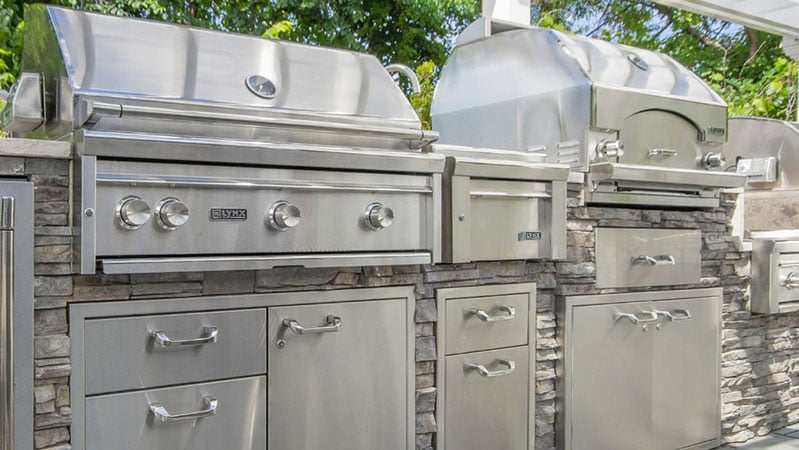
If you're planning to upgrade your outdoor setup this summer, prepare for higher prices.
Weber is expected to raise prices by 15 percent or more, and premium brands like Hestan already implemented a 30 percent increase earlier this year.
Sinks
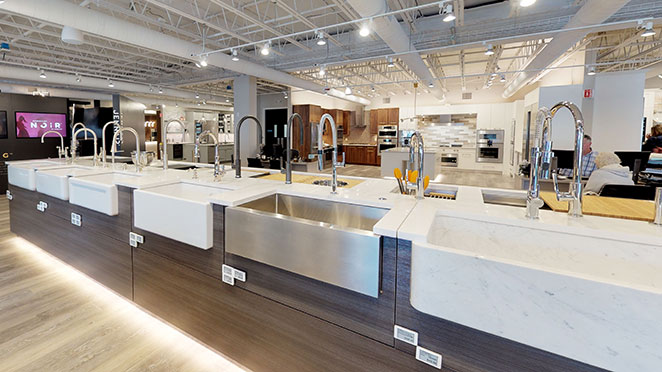
It’s not just major appliances - even kitchen sinks are affected, with Kohler recently announcing a 20% price increase.
Most stainless-steel sinks are manufactured in Vietnam or China, putting even basic fixtures directly in the path of cost increases.
And with supply chain adjustments still lagging, prices may rise even more.
What to Expect Through 2026
Price Increases, Product Shortages, and Fewer Promotions Ahead
| |
What to Expect |
| Now-Summer 2025 |
Manufacturer price hikes continue (Bosch, Thermador, Fisher & Paykel, etc). Tariffs paused, but temporary deals may still be available. |
| Summer-Fall 2025 |
Watch for signs of tariff return. If reinstated, prices could climb again. Confirmed brand price increases begin May 15th. |
| Late 2025-Early 2026 |
Possible product shortages, fewer promotions, and longer wait times if tariffs return and demand shifts. |
Despite tariffs being on hold, you could still run into higher prices or product shortages. This is even more likely if tariffs return later this year.
Prices Will Climb

With a 10% blanket tariff on all imports, and even steeper country-specific tariffs like 104% on China and 46% on Vietnam, most of the components that go into making appliances just got a lot more expensive.
We're talking steel, aluminum, compressors, wiring harnesses, electronic boards - all of it.
Even if the final assembly happens in the U.S., most parts are still sourced globally, particularly from China, Korea, Thailand, and Mexico.
Expect price increases by Q3 or Q4, mainly on SKUs with lots of imported parts like laundry and built-in refrigeration.
Supply Chain Shifts and Shortages
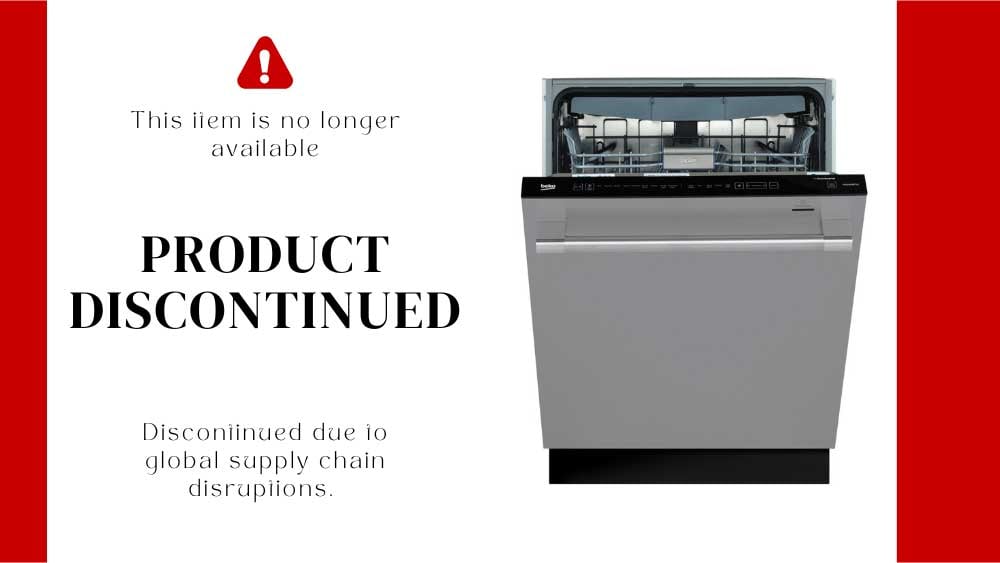
Short term? You probably won’t see excess stock or strange discounts.
Long term? Once tariffs hit, availability could tank, especially on niche models or anything with a complicated supply chain.
Expect more “discontinued due to sourcing” notices as brands rationalize product lines.
That’s not a bad thing, by the way. There were 104 Bosch dishwashers pre-pandemic; now there are just 52.
Fewer Promotions and Rebates

As production costs increase, promotional budgets are shrinking.
Buyers should expect:
- Fewer bundle incentives
- Smaller rebates
- Stricter eligibility (such as minimum unit purchases)
Smaller Brands Face Greater Risk
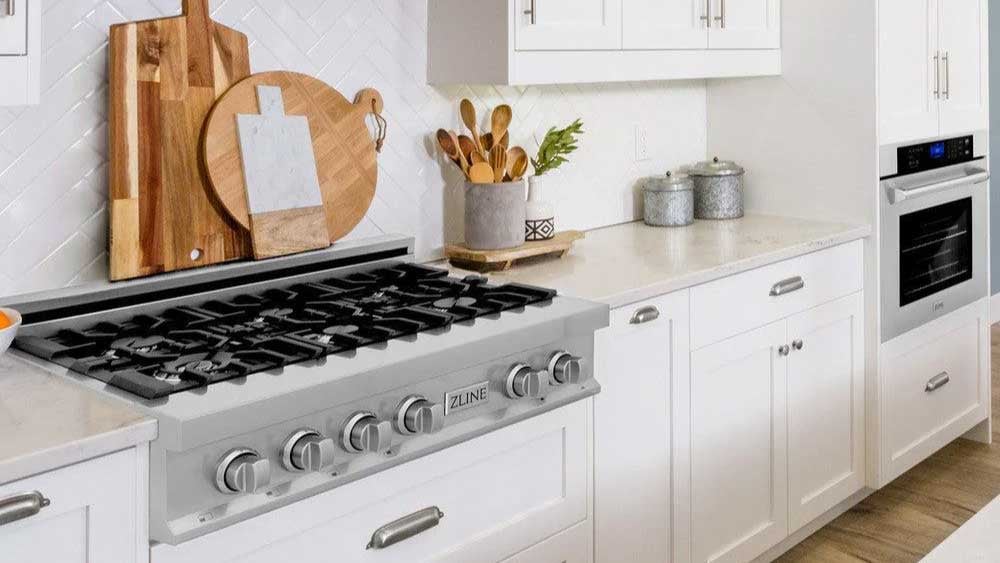
Bertazzoni’s 20–40% price hike is a preview of what may happen next.
Import-heavy Chinese brands like Thor, ZLINE, Forno, and Cosmo may:
- Raise prices more aggressively
- Reduce support and availability
- Exit the market or merge with others
If you're shopping for these brands, check for pricing changes, and consider long-term service availability.
Be careful.
Service and Parts Delays
With more parts being routed to new production, repair wait times may grow and replacement parts could become harder to source.
💡Pro Tip: If your appliance needs service - even for a minor issue - schedule it early to avoid delays and rising costs.
Manufacturers Move Production Closer to Home (Slowly)
To reduce risk and shipping costs, some brands are shifting manufacturing to the U.S.:
- Samsung is evaluating a move from Mexico to South Carolina for dryer production.
- LG may relocate refrigerator production to Tennessee.
These transitions take time, but they reflect a longer-term strategy to adapt to global trade shifts.
Silver Linings for Buyers in 2025
Interest Rates, Financing Options, and How to Shop Smarter
Before you rush to call your local appliance store in a panic, consider two key factors:
- Interest Rates: High-yield savings accounts are currently offering competitive interest rates, with some yielding around 4% to 5% Annual Percentage Yield (APY).
- Financing Options: Many retailers continue to offer 0% financing for 12 months on qualifying purchases. For instance, some appliance manufacturers provide financing options with rates as low as 0% APR through partnerships with financial services.
However, it's important to manage these financing options responsibly.
Missing a payment or failing to pay off the balance within the promotional period can result in deferred interest charges, with rates potentially as high as 28.99%.
💡Pro Tip: Always read the fine print of financing offers and set up reminders for payment due dates to avoid unexpected interest charges.
What Should You Do Now?
Smart Appliance Shopping Tips Based on Your Timeline and Budget
This question has become a bit of an obsession for someone I know - my Jiu-Jitsu teacher (they call them professors, no idea why) turned home developer.
He’s planning a remodel and keeps asking the same thing you might be wondering:
Should I buy now, or wait?
Here’s the advice I gave him, and it applies to just about anyone navigating the market right now:
For Short-Term Needs
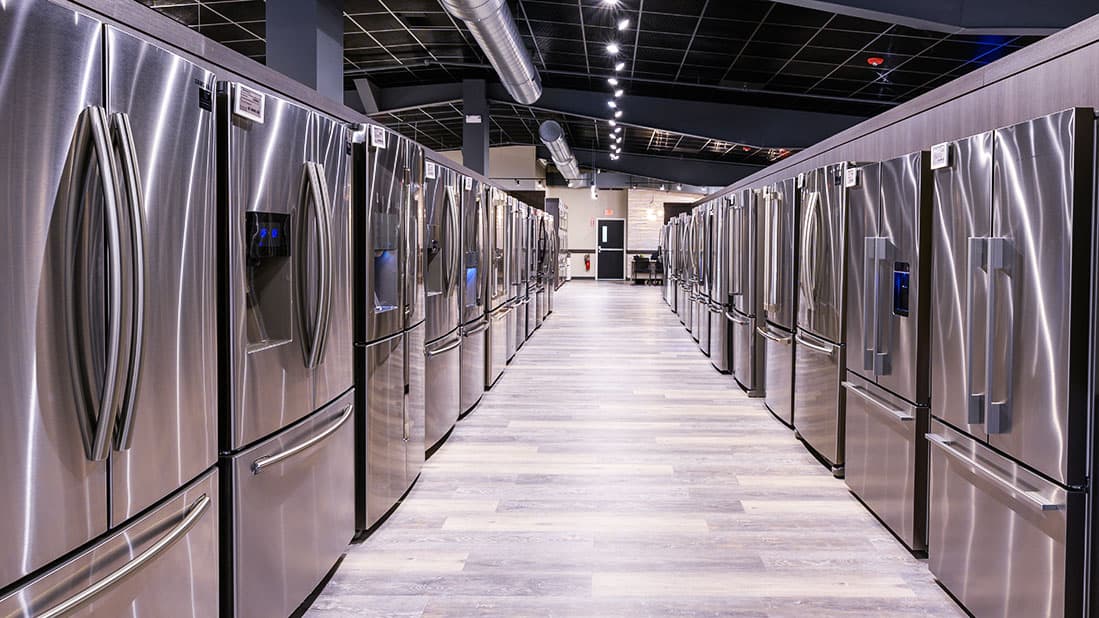
If you’re replacing an appliance soon or starting a project in the next few months, it's a good idea to buy now.
You may be able to wait a little longer, but keep in mind that the next round of price hikes is scheduled for May 15th on certain brands.
For Long-Term Projects

Planning for a remodel later this year or early next?
Get quotes now and monitor prices closely. Speak to your salesperson and buy when he has confirmation of another price increase.
We usually have advance notice. You now know about Thermador price increases due May 15th.
Be Careful Where You Buy
Not all retailers are equally prepared for ongoing supply issues.
Some smaller stores still struggle to hold inventory. They'll either have to buy your appliance now and store it, or pay the price increase when you take delivery.
However, most don't have available warehousing and can't afford an 8-20% hit to their bottom line.
In 2022, Boston Appliances abruptly shut their doors, taking millions in deposits from customers.
💡Pro Tip: Before you place an order, always check recent reviews.
Google “[store name] delivery” and see what other customers are saying about timelines and reliability.
Always pay by credit card with smaller companies. Never cash or check.
Builders: Brace for Change
If you are a builder, your world will change considerably.
I feel sorry for you as I write this, but there are no more price locks going forward.
You have a 30-day quote and then must decide whether you can bring the products in.
Hopefully this changes soon.
I know this is upsetting.
Final Takeaways
Act sooner rather than later. Get a quote, then place your order before prices increase.
But watch where you buy. This situation will hurt many appliance dealers.
Some may never recover.
Make sure you order from one that will.
Decision Matrix: When and What to Buy
Clear, Actionable Recommendations for Every Scenario
| |
Buy Now (Before Tariffs Take Effect) |
Wait Until Later in 2025 |
| Remodeling in 2025? |
✅Buy now to lock in lower prices and avoid supply chain disruptions. |
❌Delays in project completion could mean higher costs later. |
| Need a refrigerator, range, or washer ASAP? |
✅Buy before summer. A tariff delay gives you a short-term opportunity to save. |
❌Waiting risks paying 6–15% more later. |
| Buying Thermador, Bosch, or Fisher & Paykel? |
✅Prices are increasing May 12th, |
❌Delaying past May 12th will add roughly 20-40% |
| Buying Sub-Zero, Viking, or GE? |
✅No price increases scheduled yet. |
❓Monitor the prices. Get a quote. |
| Buying budget appliances (Haier, Hisense, GE Basic)? |
✅Lock in current prices before tariffs hit Chinese imports. |
❌Prices will likely jump 10–20% later in 2025. |
| Waiting on a new build or long-term project? |
✅Get quotes now and monitor price trends—lock in deals if you see a 10–35% discount. |
❓Monitor the prices. Get a quote. |
| Can’t afford to buy outright? |
✅Consider 0% financing, but avoid deferred interest traps. |
🗒️Good hedge, but DON'T finance at 30% |
Additional Resources
Before you spend a dime, learn the facts from over 33,000 service calls, discover which brands are actually reliable, and see how to time your purchase for the best price. More than 1 million people have trusted the Yale Appliance Buying Guide - now it's your turn.
👉 Download Your Free Appliance Buyer's Guide Today.
Related Articles:














